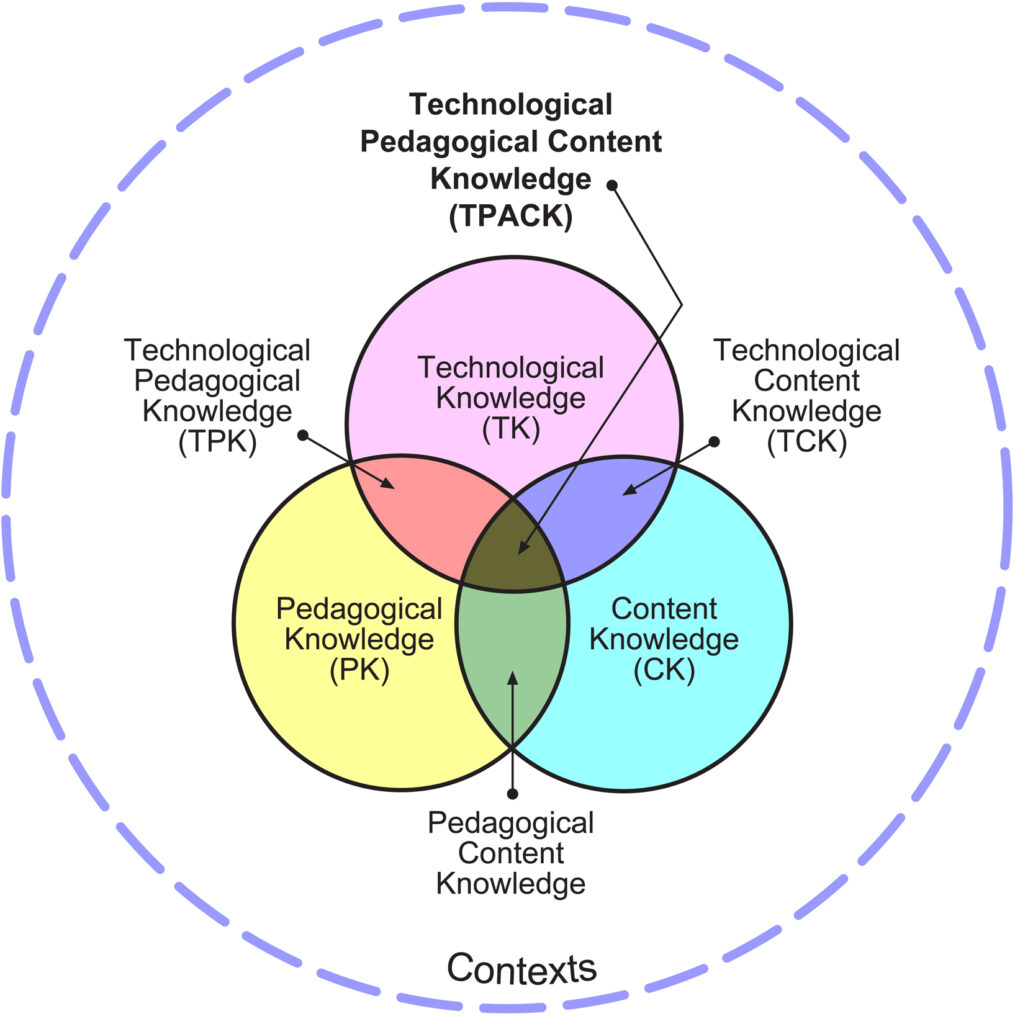
TPACK for Teaching
This constructed model of teacher knowledge, Technological Pedagogical Content Knowledge (TPACK), attempts to identify the types of knowledge teachers hold for integrating technology into their teaching, while addressing the complex nature of what teachers must know to teach successfully in their field or area (Koehler, 2012). The TPACK framework was first described by Mishra and Koehler in 2006, and extends Shulman’s idea of Pedagogical Content Knowledge.
Components of the TPACK Model
Learn more about the components of TPACK.
Review the Model
Drag and drop the examples into the hotspots on the TPACK image.
Apply the Model in Your Teaching
Although written for a K-12 audience, Judy Harris, Mark Hoffer, and colleagues (2010) developed an approach to integrating technology into instruction by identifying and categorizing learning activity-type taxonomies. The authors provide examples in which they
- Identify the content/curriculum area (e.g., mathematics)
- Identify an activity type (e.g., such as practice/computation or evaluate/test a solution)
- Provide a brief description of the activity type (e.g., “The student systematically tests a solution and examines whether it makes sense based upon systematic feedback, which might be assisted by technology.”)
- Identify example technologies that might support the activity type (e.g. graphic calculator, concept mapping software, interactive whiteboard)
The authors aim to emphasize “the primacy of pedagogical content knowledge in both instructional planning and technology integration processes as we have conceptualized them” (p.603). As well, they aim to create greater awareness of different activity types in a particular content in order to increase awareness of instructional strategies that can accommodate learners and support learning.
Tips for ensuring TPACK (rather than PCK)
Some of these tips are adapted from Anderson (2013).
- Use content and pedagogy knowledge to drive technology selection
- Use available training and supports for unique apps and software for both faculty and students
- Create a learning culture that fosters technological skill development
- Engage in educational development to further and deepen skills
Implications and Extensions
Decades after its initial description, researchers and practitioners discuss the extent to which the model is still relevant and applicable not only to understand and enhance teacher knowledge but also to improve education systems. In the recorded presentation below, speakers also discuss how the model has been researched, transformed, and applied in different contexts.
Learn more via the TPACK.org website or the TPACK Academy.
References
Harris, J., et al. (2010). “Grounded” Technology Integration: Instructional Planning Using Curriculum-Based Activity Type Taxonomies. Journal of Technology and Teacher Education, 18(4), 573-605
Koehler, M. (2012). TPACK explained. TPACK ORG.
Koehler, M (2017). A brief history of TPACK. [Video.]
Mishra, P., & Koehler, M. J. (2006). Technological Pedagogical Content Knowledge: A framework for teacher knowledge. Teachers College Record, 108(6), 1017–1054. https://doi.org/10.1111/j.1467-9620.2006.00684.xCOPY CITATION






